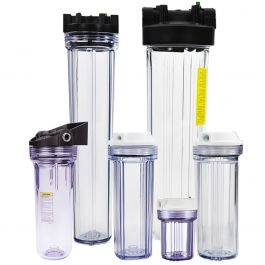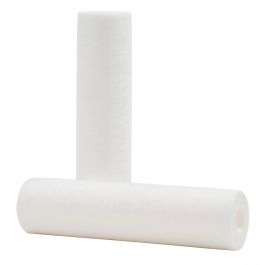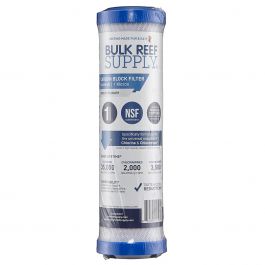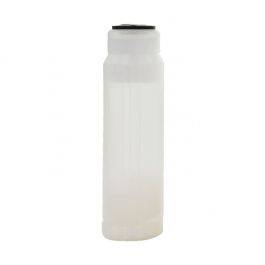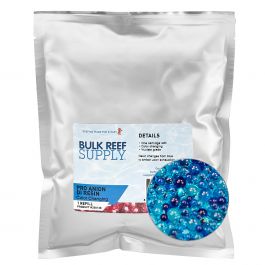Hi folks, this is my first post! I'm not a reefer, rather I'm a professional aquaponic/vermiponic farmer... I hope you don't kick me out! A lot of my education about water chemistry has come from reef forums...you folks seem to be a bit more chemistry oriented than the farming community.
We chronically have chloride toxicity in our nutrient solution. We're in San Diego and city water has about 140ppm chloride, 120ppm sodium, 8.2pH, EC 1000 uS/cm, 150ppm carbonate, 120ppm Ca...etc. Veggies don't take up much sodium or chloride, so it accumulates in our reservoir until it becomes toxic.
We don't want to remove everything from the water, just the sodium and chloride. (the thread is named "chloride removal" because there's more info about sodium removal out there, and I can solve that issue separately) The calcium and carbonates are beneficial. We also don't like wasting 50% of our water with RO. We use 400 gallons/day and water is expensive here. We also can't afford to constantly be throwing away cuft of DI resin. Farmers don't make anything, everything has to be the highest economy.
Here's what I'm thinking...let me know if you think this will work, as it would be an expensive experiment.
1)
We would use a water softener system, where the brine canister contains potassium bicarbonate (KHCO3, highly soluble, pH 8.2) and the exchange canister would contain cation and anion resin beads. The idea is that the potassium gets exchanged with the sodium, and the carbonate gets exchanged with chloride.
2)
We would use two water softeners in sequence. First one with brine of Potassium Chloride(already proven) or Calcium Chloride(?) and exchange canister with cation resin. Second one with brine of potassium carbonate(KCO3, ph 11.5 ) or potassium bicarbonate(KHCO3) or potassium hydroxide or calcium hydroxide or calcium oxide or wood ash (wood ash contains everything that was just listed, and is caustic once dissolved...we like free materials)
If this can work, which cation and anion resins should we purchase? If it can't work, how would you create an economical solution for removing sodium and chloride?
Thank you!
We chronically have chloride toxicity in our nutrient solution. We're in San Diego and city water has about 140ppm chloride, 120ppm sodium, 8.2pH, EC 1000 uS/cm, 150ppm carbonate, 120ppm Ca...etc. Veggies don't take up much sodium or chloride, so it accumulates in our reservoir until it becomes toxic.
We don't want to remove everything from the water, just the sodium and chloride. (the thread is named "chloride removal" because there's more info about sodium removal out there, and I can solve that issue separately) The calcium and carbonates are beneficial. We also don't like wasting 50% of our water with RO. We use 400 gallons/day and water is expensive here. We also can't afford to constantly be throwing away cuft of DI resin. Farmers don't make anything, everything has to be the highest economy.
Here's what I'm thinking...let me know if you think this will work, as it would be an expensive experiment.
1)
We would use a water softener system, where the brine canister contains potassium bicarbonate (KHCO3, highly soluble, pH 8.2) and the exchange canister would contain cation and anion resin beads. The idea is that the potassium gets exchanged with the sodium, and the carbonate gets exchanged with chloride.
2)
We would use two water softeners in sequence. First one with brine of Potassium Chloride(already proven) or Calcium Chloride(?) and exchange canister with cation resin. Second one with brine of potassium carbonate(KCO3, ph 11.5 ) or potassium bicarbonate(KHCO3) or potassium hydroxide or calcium hydroxide or calcium oxide or wood ash (wood ash contains everything that was just listed, and is caustic once dissolved...we like free materials)
If this can work, which cation and anion resins should we purchase? If it can't work, how would you create an economical solution for removing sodium and chloride?
Thank you!







